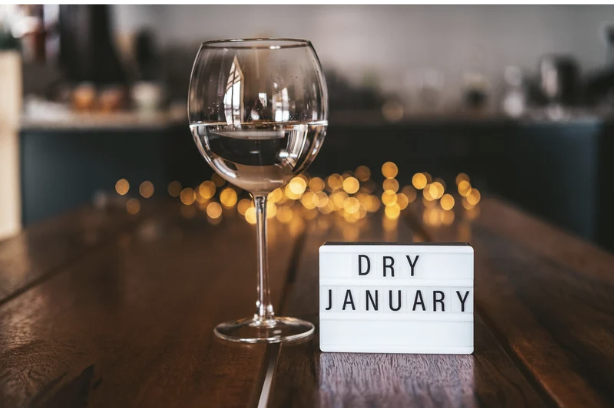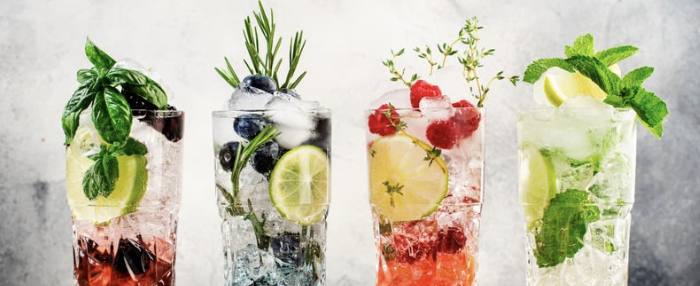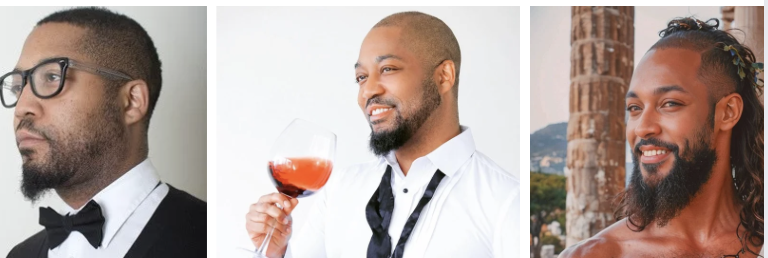
Discovering Dion By Rediscovering Dionysus
By CHARLES DION SPRINGFIELD
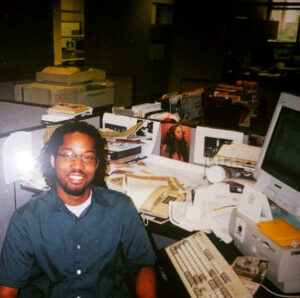
Nearly 25 years ago, I begrudgingly left my print journalism career. I wasn’t fired. I wasn’t pushed out — technically. I left on my own accord. It actually seemed to be somewhat of a self-fulfilling prophesy. I’ll explain that later.
However, recently, to my surprise and the surprise of many others — the lore and lure of Dionysus, the Greek god of wine, helped bring me back to journalism. This time on my own terms.
Here’s my story!
I mentioned a sort of prophesy earlier, right. You see, before before finishing` graduate school in May of 2002, I wrote my master’s degree thesis paper surrounding the difficult situations that many minorities in newspaper newsrooms were facing across the country.
Shout out to Jackson State University’s Mass Comm Department and my thesis advisors across the university’s different departments. Love you. Miss you. Let’s catch up if you read this!
The problems in newspaper newsrooms were vast. Some were overt and some were extremely subtle. They ranged from full-out racist and discriminatory attacks from readers. Those attacks came mostly in the form of calls, letters and emails towards the Asian, Black, Hispanic, LGBTQ+ and Native American journalists. Then there were the exasperatingly consistent microaggressions from their colleagues, editors and publishers.
“I hoped — like fingers crossed hoped — that I would not personally be another number added to the disproportionate number of minorities leaving American newspaper newsrooms. Because I felt the same way as my research subjects.”
A little context: For research purposes, I had to limit it my research to newspaper newsrooms rather than including television, radio and news services. And there were five major minority journalism groups that were studied: NABJ (National Association of Black Journalism), NAHJ (National Association of Hispanic Journalists), AAJA (Asian American Journalists Association), NLGJA ( National Lesbian and Gay Journalists Association) and NAJA (Native American Journalists Association).
My research paper outlined issues from being pigeonholed into only covering stories related to the reporter’s community, skin color or sexual orientation, not receiving the appropriate mentoring and then — of course — regularly being overlooked for promotions while others seemed to pushed, if not pulled, up the corporate ladder.
These were real issues discovered through quantitive and qualitative research. That was one of the reasons why I opted for that topic in the first place, but not the only one.
In the back of my mind, I hoped — like fingers crossed hoped — that I would not personally be another number added to the disproportionate number of minorities leaving American newspaper newsrooms. Because I felt the same way as my research subjects.
Unfortunately, as graduation rapidly approached, it became painfully obvious that this was going to my reality. The prophesy was being fulfilled. I had to leave. I could not envision any other option.
It was a painful decision to make at the age of 28. I’d grown up consuming “the news” in all forms. I tore through the weekly Sunday “Milwaukee Journal-Sentinel” newspaper pages as a youngster. In college — after switching my concentration from advertising to journalism — I daydreamed about being a television anchor on NBC or an editor at “GQ” magazine or a staff writer with “The New York Times.”
In an effort to make those dreams come true, I had spent countless hours soaking up experience at the campus television station, W23LPTV (low-power television) building my resumé tape.
I also spent a considerable amount of time at the campus newspaper, “The Blue & White Flash.” I contributed news stories and then moved up the ranks to the Variety Editor position. In that role, I covered campus life, music, entertainment, books and cultural trends up until graduation. I even did feature writing internship with a local, startup magazine called “Empower One.”
Leading up to graduation, I cut out my newspaper clips, made copies of those clips, put the copies on 8.5 x 11 paper, made copies of those documents and assembled them, along with my student journalist resumé. I mailed the resumé packets out to any and every newspaper and magazine in America I thought might be interested in employing me.
Whoa, I’m getting crazy flashbacks of that time.
So yes, lots of manilla envelopes, trips to the post office (always a fun place, right?) and postage fees that I couldn’t really afford at the time all went to securing my dream of advancing from a student journalist to a professional one.
Ahhh, and then there were the job fairs leading up to graduation — the hotels stays, the suits that needed to be pressed, the shoes that needed to be polished, the ties that needed to be tied and shirts that needed to be starched.
Finally, I had secured employment. My first job was at a two-time, Pulitzer-prize winning newspaper in New Orleans and the second one right after that was in Jackson, Mississippi, the largest newspaper in the State. It was the same city where I was an undergrad student and where I opted to attend graduate school.
I loved being a writer/editor — outside of the pay, the newsroom politics and petty personalities. I felt like I was learning a lot of things; about life, the world, story telling and about myself. Working in that role also made me fell like I was doing something helpful, something beneficial to the community at large.
My professional journalism career only lasted four years, unfortunately. It seemed like I had spent more time preparing for the career than actually having the career. I had succumbed to many of the elements that pushed other minority journalists to leave America’s newspaper newsrooms.
I was very fortunate for that short time because many of my journalism/mass communication student peers did not even get the chance to gain employment in these newsrooms. That is another problem and another story.
My departure did feel appropriate to me. I didn’t regret it. I was embarking on a public relations career next. And I had a nagging feeling that the journalism industry was changing. The World Wide Web had made its presence and importance known in daily newspapers, and the media in general, and a major shift was about to occur — especially after surviving the Y2K scare.
I AM A JOURNALIST?
I’m well aware that it is not wise to assign what you do for work as a personal identity. Instead of saying, “I am an accountant,” it is suggested by career coaches and mental healthcare professionals that you instead say “I work as an account” or “I work in accounting.”
Intertwining who you are and what you do for work can often lead to an identity crisis, especially if you find yourself no longer working in that profession or role. It can be a jarring experience to figure out who you really are outside of work.
The strange thing with that is, I’ve always kind of associated myself as a “being a journalist.” I suppose that’s because I believed the ideals of journalism closely aligned with my own personal beliefs and approach to life.
I had been inspired and influenced by Black journalists before me like Ida B. Wells, Frederick Douglass and Ethel Payne. They each filled a much-needed role in society by providing a voice for Black people, advocating for justice and putting humanity front and center in their reporting.
As a marginalized person living in America, it is obvious to me that it’s important for these communities to see themselves reflected in the reporting of our/their communities in positive ways. I was sensitive to stories and headlines mired in stereotypes and biased representations. And it bothers me even more 25 years later.
I felt it was my role as a journalist and as a Black man in this country, to do my part to curtail those things, using whatever power I had within the newsroom. That perspective was greatly shaped by attending an Historically Black College and University (HBCU) and their mission to collectively uplift and empower our communities by spreading what we’ve learned in college.
These days, I am more of a consumer of the media and less of a practitioner. And over the last 10 years, I’ve noticed some troubling trends. It seems truth in media is becoming an old fashion notion, in both traditional media and certainly on social media. The spin is out of control. Misinformation has been spreading extremely fast. The gas lighting has reached disgusting, unexpected lows. Reality was getting distorted. People, places and situations were being demonized. My community and my cousin communities are being demonized.
It doesn’t take a scholarly research study to realize that considerable damage was being done. But what can be done now? The traditional media doesn’t seem to be doing much to change things. Social media executives placates concerned politicians and citizens by saying that changes will be made to resolve the problem, but only generic bandaid fixes are applied. And now we’re left with a society of people, even within our own community, not only consuming all this terrible, false information, but also spreading it.
I thought to myself, “we might not be able to put the toothpaste back in the tube, but we do have the power to clean up the mess.”
That’s when I remembered: “I am a journalist.”
DISCOVERING DION THANKS TO DIONYSUS
Despite officially leaving journalism all those years ago, I have proudly carried the tenants of the journalism profession with me. I’ve tried to find ways to integrate them into nearly everything I’ve worked on since — even in my current wine career.
I professionally identify as a certified sommelier, wine educator and two-time author. And now, I can add — somewhere in there — publisher and editor-in-chief of this new magazine.
For nearly the last 15 years, I’ve had an amazing time working in the New York City wine industry.
It hasn’t always been easy, now. There have been pockets, upon zippers and fanny packs full of struggles. Somehow, I have a knack for selecting highly demanding careers that severely lack in diversity. I must really enjoy a challenge.
On the other hand, there have been cases stacked upon cases of joy, new friendships, learnings, ever-growing opportunities, a global network of contacts, boundary pushing initiatives, entrepreneurial endeavors and “the sky’s the limit” type of potential.
Deciding to re-enter the journalism industry, per se, wasn’t something I had been considering during my career in wine. I was more than happy to do my classes, events, work on some books, partner with some brands, do some book signings from time-to-time and maybe acquiring a wine shop or venue to host events as a long-term goal.
But last year, 2024, brought about some Earth-shattering events that led me to the realization that a major shift needed to be made in how I approach my career and life.
When unexpected layoffs occurred in July 2024 at the company where I was employed full-time, I had some time on my hands. I had some time to rest. I had some time to grieve (not the job, but loved ones lost) and I had some much-needed time to check in with my family and, most importantly, with myself. It was a rough year. And I really needed that time, so I was grateful for the change.
I thought. I meditated. I drank. I prayed about things. What can I do with this little company (side-business), The Life Stylings of Charles Springfield, that I started nearly 15 years ago? What has it morphed into over the years? Does it have meaning? Does it have value? Is it sustainable? And if not, how do I fix it?
I decided that the company needed a major makeover. It needed to be updated. It needed a reorganization. It needed to easier to understand. And if this company was to be sustainable and, consistently generating income, it needed something that would be the new focal point of the business pull all the other business services/offerings together under one roof.
Appalled by today’s media landscape and fueled by the inspiration of community-centric media outlets of the past and present like “Ebony/Jet, “Essence,” and “Vibe,” I decided to create a digital wine/lifestyle magazine as the new focal point of my business.
I saw a unique opportunity to create a story-telling vehicle and platform that centers wine and lifestyle topics and how they revolve around and relate to the Black community in particular, as well as other marginalized groups and our cousin-communities.
It would tie my lifestyle brand functions (writing, tips, trends) in more closely with my wine services (educational wine events, books, appearances), and allow me to use my journalism training to inject some much-needed joy, empowering content, expert advice and relevant information into the world to counteract many of the negative narratives going on in social media and the mainstream media.
The technology is now available to pull off this endeavor and, remember, I have some time. Well, I was supposed to have time, but that’s another story for another day. I had to reclaim my time!
But what would I call this magazine? That is when I ran into several brick and digital walls. I brainstormed a list of ideas that include many of my branding elements, of course, wine and then life or lifestyle, wine style, wine + life, wine life, maneuvering life and wine combinations as well as other options related to adult beverages.
I’d come up with a good option, something I felt comfortable with, and then BAM! I’d hit an intellectual property road block. Every time I checked the internet, social media platforms, and especially GoDaddy, it was like the annoying buzzer from “The Family Feud” went off and a giant, red “X” appeared in my face.
Back to the drawing board. The next option was to use my name, initials or something that was actually connected to me. When I first started my business, I included my name for two major reasons. The first was because I was inspired by how jazz singers or musicians were introduced on television back in the day: “Ladies and gentleman! I’m proud to introduce to you the vocal stylings of Billie Holiday.” That’s how my company name came about to indicate my particular approach to “lifestyling” and “wine styling.” The second was to protect my intellectual property. It would be very challenging for someone to take my business name with my name in it or associated with it, I thought all those years ago.
Then I was like, I’m not like an Oprah or a Martha or a Hoda…yet. I can’t call it “Charles.” Without their type of cache, it just felt self important and pretentious. I couldn’t really call it “Springfield” either. Again, pretentious, not enough cache and confusing because there are like nearly 70 U.S. cities/towns named Springfield. Wine or lifestyle isn’t the first thing that comes to mind when thinking about Springfield, Massachusetts, Springfield, Ohio, or Springfield, New York (population 1,323) for that matter.
Then it hit me! I never really use my middle name anymore for work. I used it in some bylines in the past and on resumés, but it hardly ever shows up in my life anymore. Oh, if you haven’t guessed, my middle name is Dion. Pronounced like Dionne Warwick or Celine Dion, not like lion.
How would that work, though? I know the name Charles has some history and meaning, but what about Dion? So I Googled it! Lo and behold, it has several meanings across Latin, French and Greek. But, most importantly, the name Dion comes from the Greek name Dionysios or Dionysus, which means “god of wine and revelry.” What?!?
Now, I was very familiar with Bacchus, the Roman god of Wine. As a matter of fact, my very first wine job was at a wine boutique called “Bacchus: Wines Made Simple” on the Upper West Side of Manhattan. I even often credited “Bacchus” for giving me my start in the wine business as well as my first close-knit group of friends in NYC. I knew that Dionysus was the Greek god of wine, but I wasn’t sure if they were part of the same mythology. All I knew was that somehow Bacchus had overshadowed Dionysus as the “god of wine” in my life. But not anymore, especially since the Roman Empire was notorious for cultural appropriation, especially when it came to wine.
Dion was perfect! It was beyond perfect. It was kismet. It was meant to be because of its associations with wine, joy, revelry, theatre, wine education and much more — all the things I wanted to focus on with the magazine.
DION it is! The magazine now has a name and it has a deeper inspiration. There are no foreseeable intellectual property issues and the domain name, dionmagazine.com, was available on GoDaddy! Done and done!
That’s all I needed to kick start this journey. There will be many rivers to cross to make this thing happen and there’s not a lot of time to pull it all together. But if you are reading this story, within the pages of DION, then it looks like the magazine’s destiny has been officially fulfilled.
DISCOVERING DION THANKS TO DIONYSUS
Tellus integer feugiat scelerisque varius. Sit amet volutpat consequat mauris nunc congue nisi. At ultrices mi tempus imperdiet nulla malesuada pellentesque. Netus et malesuada fames ac turpis egestas sed. Morbi blandit cursus risus at. Pulvinar etiam non quam lacus. A erat nam at lectus urna duis. Sit amet cursus sit amet. Duis at tellus at urna condimentum. Gravida quis blandit turpis cursus in hac, a sit amet. Aliquet eget sit amet tellus cras. Pharetra massa massa ultricies mi quis. Gravida arcu ac tortor dignissim convallis.
Tellus integer feugiat scelerisque varius. Sit amet volutpat consequat mauris nunc congue nisi. At ultrices mi tempus imperdiet nulla malesuada pellentesque. Netus et malesuada fames ac turpis egestas sed. Morbi blandit cursus risus at. Pulvinar etiam non quam lacus.
Charles Dion Springfield
Charles Springfield is a certified sommelier, wine educator and book author in New York City. His mission is to help promote wine appreciation through education in the form of classes, events and various forms of media. He has been working in wine in NYC for the last 15 years. His first book, “The Less is More Approach to Wine,” works to deliver wine education in easy to understand and manageable servings. He wants to help wine lovers create a deeper, more personal relationship with wine. In the summer of 2020, Charles released a new book called “Maneuvering Rosé Wine With Style” focused on educating consumers about the rosé wine category and rosé styles from around the world. In January 2025, Charles became publisher and editor-in-chief of DION, a digital wine/lifestyle monthly magazine, centering stories on the Black community and marginalized cousin-communities. For more info, visit @thewinestylings and @dionwinelifemagazine on Instagram or at www.charlesspringfield.com.
You may also like
Dry January: The Sober Movement
Alcohol Change UK reported that at least 175,000 people signed up on their website to participate i
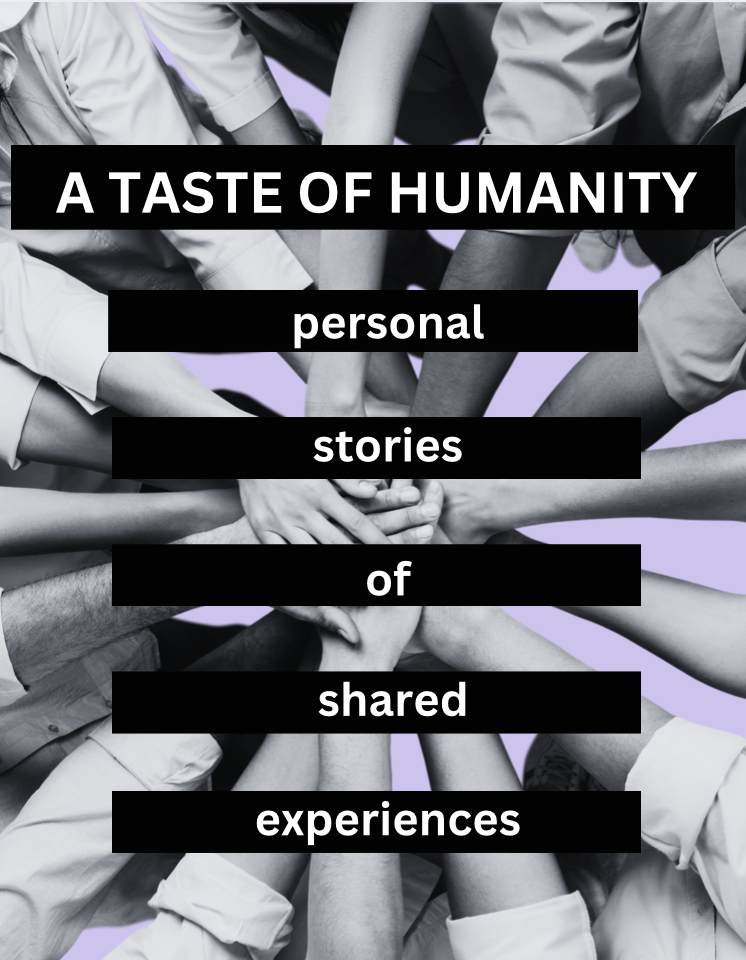
Feel Everything You Need To Feel
What are normal emotions while experiencing grief? The short answer is everything. It’s totally no
Mock Me, I Dare You
Don't mock the mocktails. They have come a long way from the Temperance Days of 1865 and your Great



